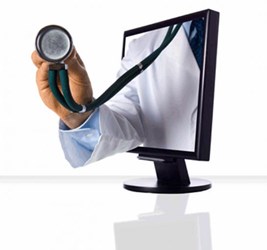Are You Ready For The Telehealth Shift Into mHealth?
By Megan Williams, contributing writer

Telehealth has always been about extending the reach of medicine closer to where patients are, so perhaps it should be no surprise that the future of telehealth is starting lean toward another healthcare trend — mHealth.
This shift is of particular importance to vendors who need to stay aware of the perceptions and mind frames of healthcare leaders and decision-makers. According to mHealth Intelligence, a recent survey of 280 executives provides some insight into those thought-processes.
The Economic Advantage of mHealth
Modern Healthcare and Avizia conducted a study of 280 healthcare executives to better understand their attitudes around telehealth and how it’s being implemented at their facilities. Alan Pitt, M.D., Avizia’s chief medical officer and professor of neuroradiology at the Barrow Neurological Institute, believes mHealth is the future of telehealth largely because of financial challenges they’ve faced around EHR platforms. Providers are looking for platforms that do more than simply track patient records — they’re looking to improve clinical care, tap into the power of population health, and meet patients where they are. mHealth solutions do this and more, and at a fraction of the price.
This means that your clients will be shifting their conversations toward patient engagement, smartphones and tablets, and versatile online portals. According to Pitt, “Telehealth really is alive and kicking, but we’re still seeing the early wave. The barriers to leveraging technology have changed greatly from just a few years ago.”
The Survey
The survey provided particular insights into how executives are thinking about telehealth. For example, results indicated the following ranking of telehealth trends in regard to popularity,
- stroke care (44 percent)
- behavioral health (39 percent)
- staff education and training (28 percent)
When the question is around what executives are focused on however, those points change:
- patient education and training (34 percent)
- remote patient monitoring (30 percent)
- primary care services (27 percent)
Those results actually align with key drivers in the telehealth sector, one of the strongest of which is meeting patient and consumer demand (a concern cited by 72 percent of respondents, just ahead of value-based care at 62 percent and increased engagement with existing patients at 49 percent).
The Technology
Vendors should also make note of what technology respondents were found to be using. Computer workstations topped the list at 40 percent, telemedicine carts came in second at 33 percent, and “specialized telemedicine peripherals,” which include cameras, scopes, and other similar devices, earned 33 percent of responses.
As we move into the future, executives appear to be most interested in video visits (facilitated through the EMR), consumer-facing apps, and company-owned mobile devices. FDA-approved biometric patient monitoring, and consumer grade monitoring devices also made the list.
Looking at these changes in both leadership interest and technology used reflects the industry shift into more patient-centric technology. Mike Baird, CEO and co-founder of Avizia reinforced the importance of proactive IT involvement in, and leadership around the telehealth challenge, “It’s the patient who’s taking control of telehealth, and it’s up to the IT departments and clinical departments to figure out how to catch up.”
